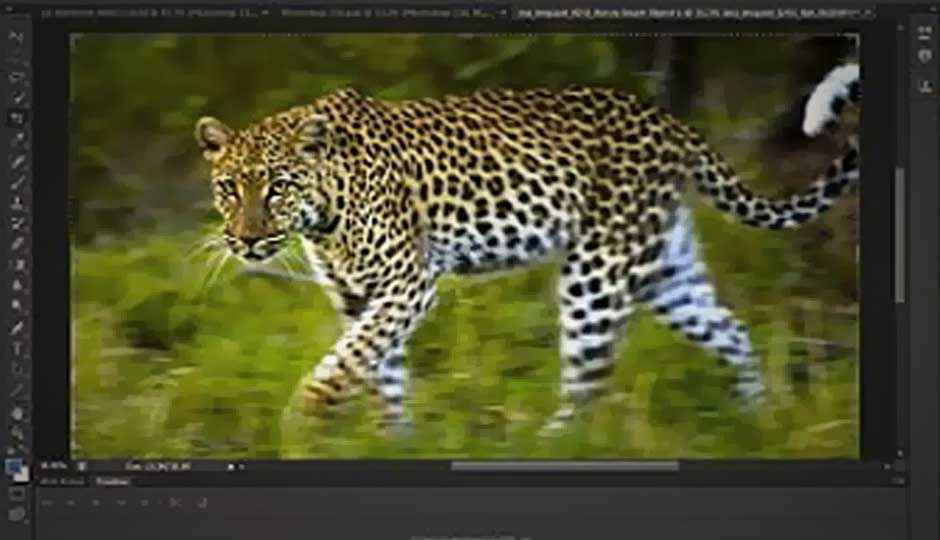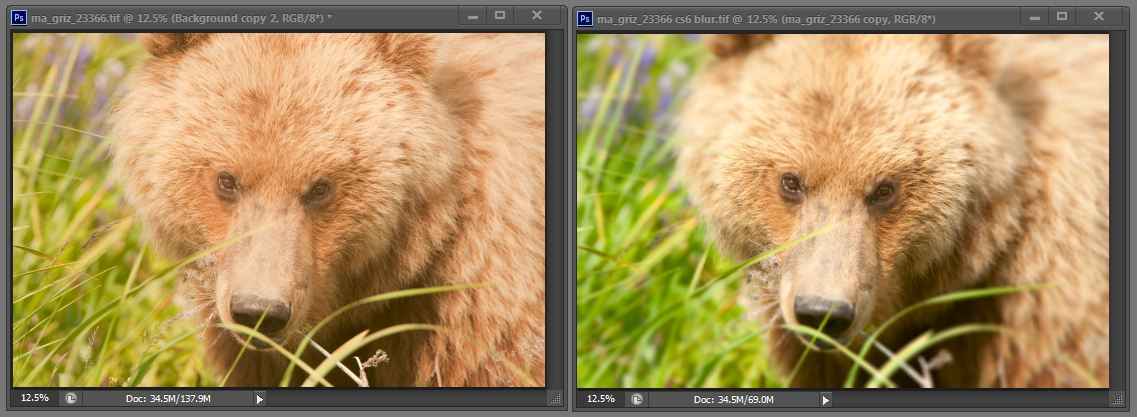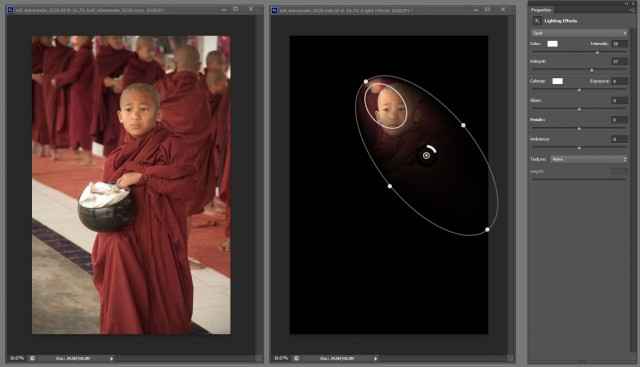Photoshop CS6: Plenty of goodies for everyone
By
Dave Cardinal |
Updated on 23-Mar-2012

Adobe has been carefully leaking many of the sexiest new features of Photoshop CS6 prior to its official announcement today, but many of the most important changes haven’t been public until now. CS6 is a major overhaul of Photoshop, starting with the user interface — long in need of updating — and continuing through just about every filter and tool. There is something for everyone in the update, with many of the changes worth more than the price of an upgrade for serious users.
You can download the Photoshop CS6 beta from Adobe Labs — or read on, for our hands-on impressions.
Updated Raw processor and UI
The first thing a Photoshop user notices when they launch CS6 is the “lightroom-like” look and feel. The sleek, sparse, dark default skin helps focus attention where it belongs — on the images and videos being edited. Logically named workspace presets including “Photography,” “3D,” and “Essentials” help new users organize the nearly endless variety of tools and palettes to get started. Adobe is also providing an updated configurator so developers can create their own palettes and dialogs for their users.
For serious photographers, the Camera Raw screen is the one they’ll see first and use most for the majority of their images. ACR, as Adobe Camera Raw is known, has been redesigned for CS6. For this, its seventh revision, Adobe has normalized all the sliders to make them less confusing. Contrast and Highlights both start out centered at 0, for example, instead of in CS5 where Contrast started around 25 and the
Highlight slider was called Recovery and started on the left at 0. The Blacks slider has been normalized in the same way. The result is a less jarring experience when using ACR to do initial image adjustments — a welcome upgrade for anyone using Photoshop instead of Lightroom for their raw image tweaking. Adobe has released some sneak peek videos demonstrating these new features.
The internals of ACR have also been updated, bringing them in line with the recently-released Lightroom. Clarity, which has always been tantalizingly powerful for bringing out the best in images with less than the ideal amount of “pop,” has been enhanced to eliminate the annoying halos which used to be the price of using it. Noise reduction has also been improved and there are several more local image adjustments available in ACR. ACR’s underlying rendering engine has also been updated. From my experiences with it, the new version is a visible improvement in maintaining accurate tonal values in shadow areas and color contrast throughout. It’s not dramatic enough that I’m tempted to go back and redo all my old images, but enough that I don’t plan on going back to the earlier version.
I processed the Brown Bear image on the left with CS5, and re-processed the one on the right with CS6 using the new ACR and the Iris Blur to focus more attention on the bear
Once an image is opened into the full Photoshop UI there are two changes that will have every veteran Photoshop user jumping for joy. First is support for Autosave and background saving. Gone are the horrors of losing hours of editing due to a crash or waiting seemingly endless minutes while a large image is being saved. This change alone is worth upgrading for anyone who uses Photoshop every day. The second huge step into the present is a redesigned Print dialog. It isn’t perfect, but it is well laid out, very usable, and does a good job of remembering preferences. Also for printing, the popular Contact Sheet II add-in has been brought back and made part of the main product. Another small, but welcome, addition is the ability to more easily share presets.
Real-time editing
Of course saving and printing aren’t the main focus of Photoshop — editing is. Here too Adobe has done a great job with tasteful upgrades to many tools. All of the “Auto” functions, like Auto levels, Auto color and Auto contrast have been rewritten so that they do a better job in more situations — with Adobe hoping they are now good enough to satisfy many users without needing to tweak the adjustments further.
Beyond adjustments, Photoshop CS6 also updates the liquify tool — favorite of fashion magazines everywhere – with real-time performance and extra-large brushes for those extra-large touchup jobs. Selections themselves can also be tweaked to be “skin-aware,” a nice productivity improvement for anyone working with portraits. The speedups in liquify and other tools comes courtesy of the GPU-accelerated Adobe Mercury graphics engine, which, after making its debut in Premiere and After Effects, has been incorporated into Photoshop CS6
Continuing its efforts to completely recreate traditional camera and darkroom effects (and keeping in line with Instagram and other mobile photo apps), CS6 adds tools for simulating shallow depth of focus (DOF) and even tilt/shift lenses, as well as correcting for the issues with wide angle lenses. This set of tools, along with the HDR capabilities introduced in earlier versions, gives CS6 users an endless number of ways to replace expensive custom gear in the field with software tools in the studio.
The Adaptive Wide Angle filter in Adobe Photoshop CS6 can fix perspective distortion in images like this one of a Burmese market shot at 12mm full frame.
Lighting Effects unleashed
One of the biggest changes is the Lighting Effects filter. This gem has been one of the best kept secrets of Photoshop maestros for many years. When used correctly it can allow a user to almost completely relight a scene after the fact. Until now it has taken a frustrating amount of subtle manipulation and estimation to get it to do what you want. With CS6, though, it offers real-time previews of the lights right on screen, making it possible for anyone to tweak the light on their subjects and backgrounds. It’s still not a panacea — getting the lighting right in the original scene is always preferred — but it is scarily good.
Lighting Effects real time preview in Adobe Photoshop CS6, adding a “god light” to this novice Buddhist monk, for example.
Photoshop CS5 introduced content-aware fill — allowing the removal of unwanted portions of an image by replacing it automatically with content which resembles its surroundings. CS6 improves the algorithms used for filling, and adds the capability to move or extend entire objects to different places in an image while keeping the background similar to the original — a photo forger’s dream.
Photoshop’s 3D capability has also been upgraded, starting with much better performance. 3D objects are now full Photoshop citizens, represented as traditional layers. Materials, lighting, and effects can be changed just like type effects have been, and of course the objects themselves can be manipulated in 3D space as part of an overall Photoshop file. Similarly, Photoshop CS6 can now handle video segments just about as easily as it can handle image layers. Adobe has showcased at least one video constructed entirely with CS6, although its hard to believe it is supposed to directly compete with Premiere.
More reasons to upgrade
For any serious user of Photoshop, there are plenty of reasons to upgrade to CS6. In addition, Adobe has provided another, more controversial, reason. Starting with CS6, users will need to be on the current version of Adobe’s Creative Suite products to be eligible for an upgrade to the next one. Partially in response to the outcry over this change (many users have become accustomed to only upgrading every other version), Adobe has relented by giving CS3 and CS4 users (as well as CS5 users of course) the opportunity to upgrade to CS6. After that, if you want to stay on the Adobe upgrade treadmill, you’ll need to have upgraded to CS6. Users of Camera Raw already know they are stuck on the upgrade treadmill, as new cameras are typically only supported on the most recent one or two releases of Photoshop.
Copyright © 2010 Ziff Davis Publishing Holdings Inc.
 Survey
Survey✅ Thank you for completing the survey!


